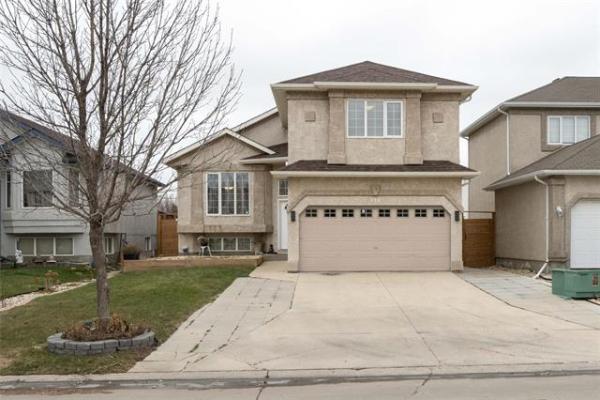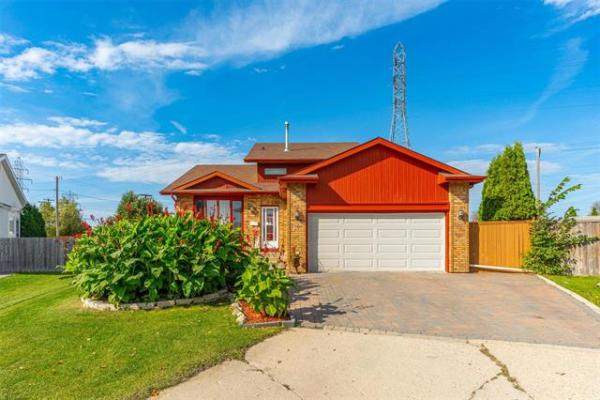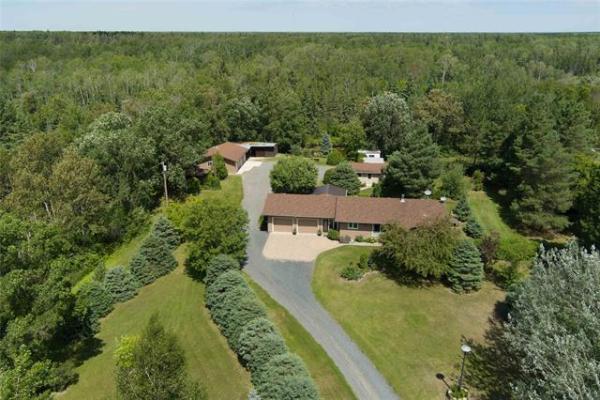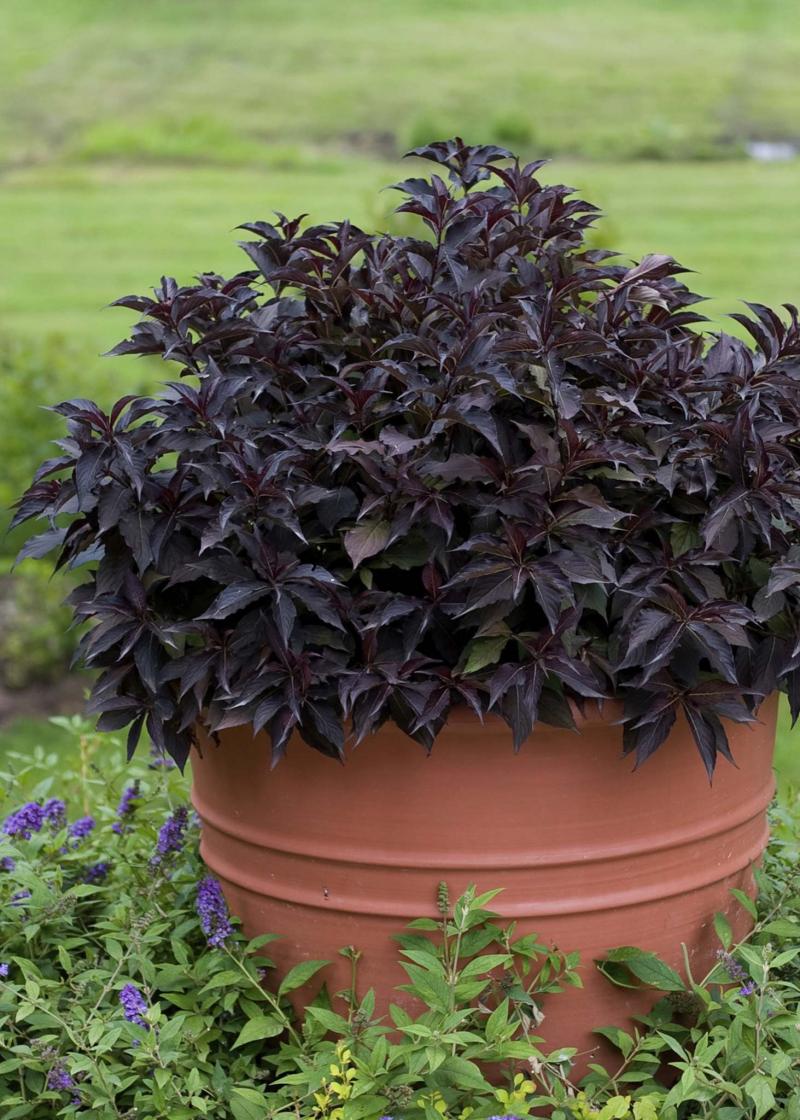
For drama and low-maintenance, shrubs such as this dark and moody Spilled Wine Weigela are instant low maintenance one-pot-wonders.
Proven Winners
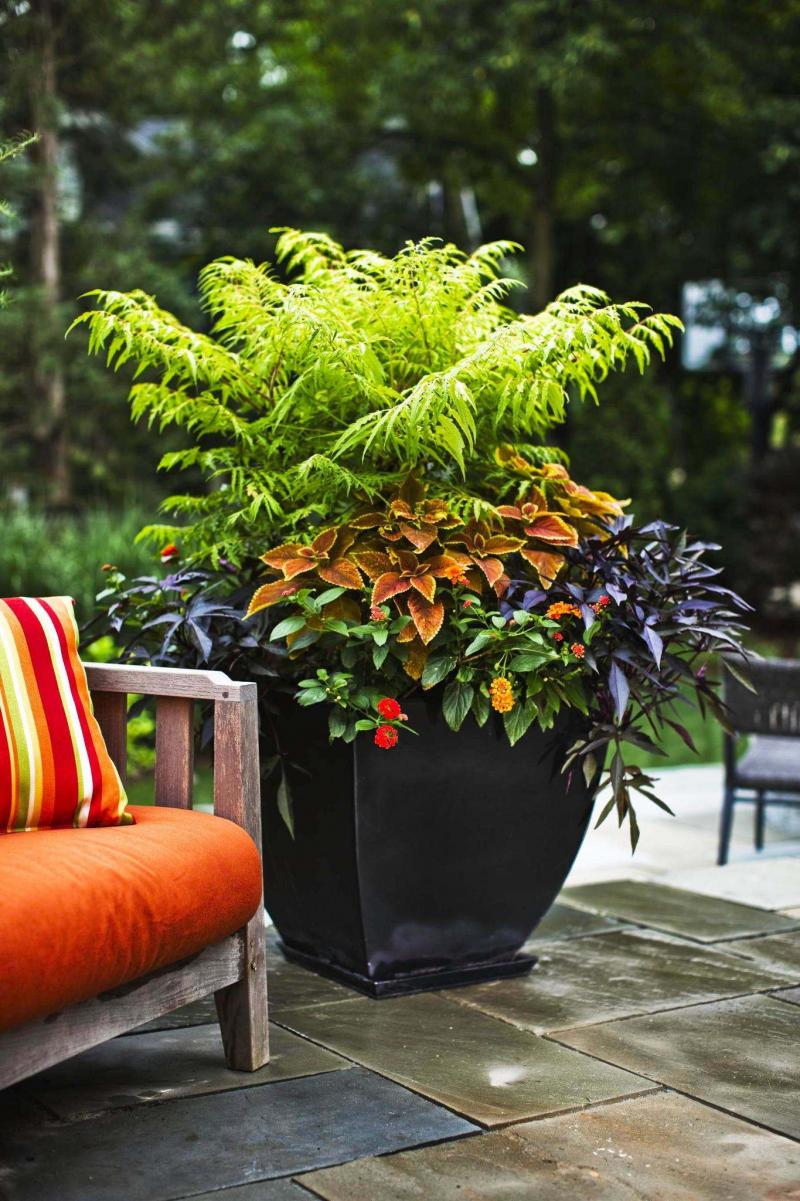
First Editions
Include Tiger Eyes Sumac in this year’s container designs for fabulous texture and bright chartreuse colour through summer, followed by spectacular fall colour. In the fall, plant this hardy Zone 3 shrub directly into the garden.
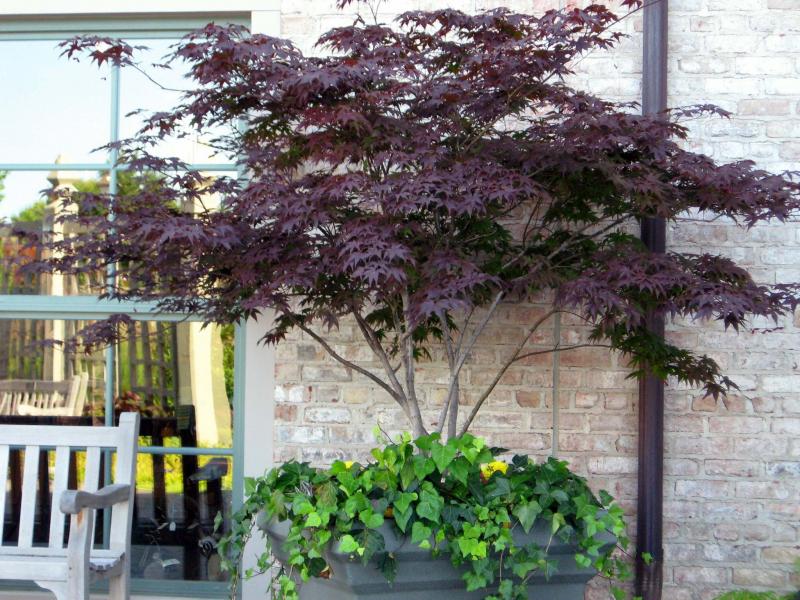
Ram Tiodin
This impressive Japanese Maple (above) will spend the winter on blocks in the homeowner’s unheated garage.
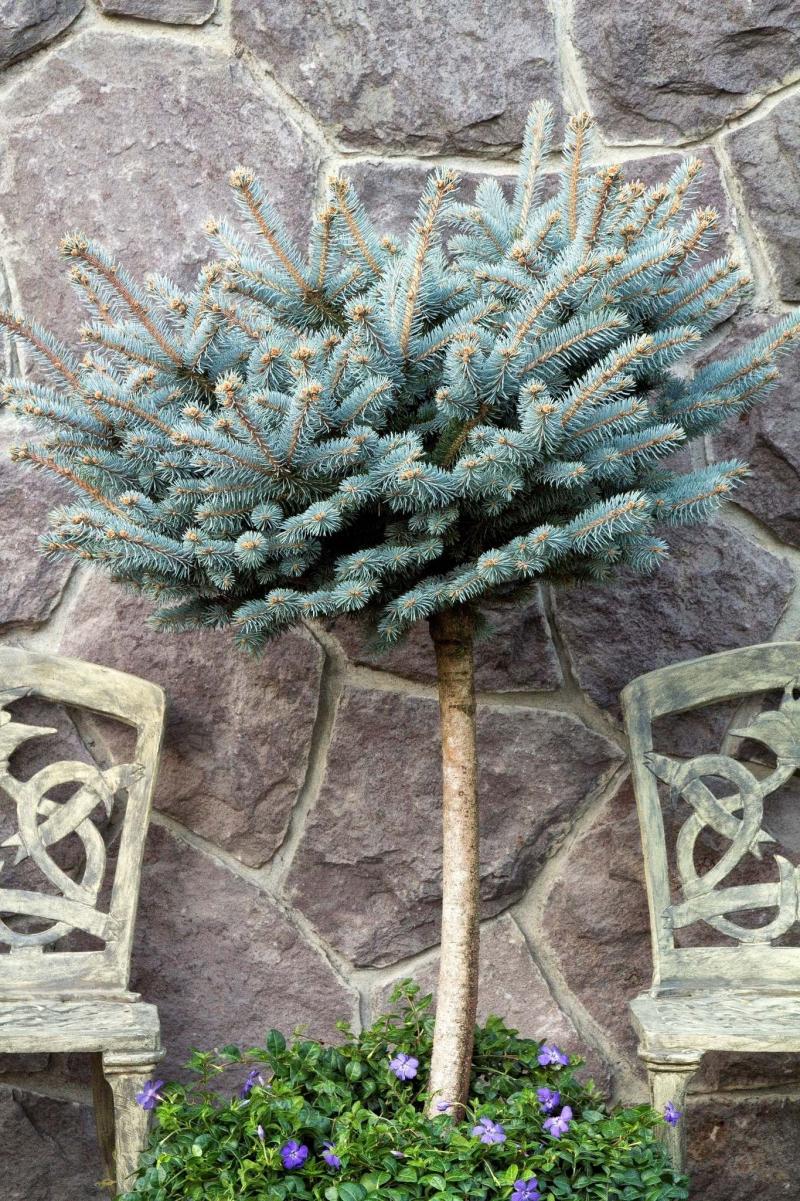
Monrovia
Above: Follow a few basics and this Zone 2 hardy Dwarf Globe Blue Spruce can make a container its home year-round.
Left: For drama and low-maintenance, shrubs such as this dark and moody Spilled Wine Weigela are instant one-pot-wonders.
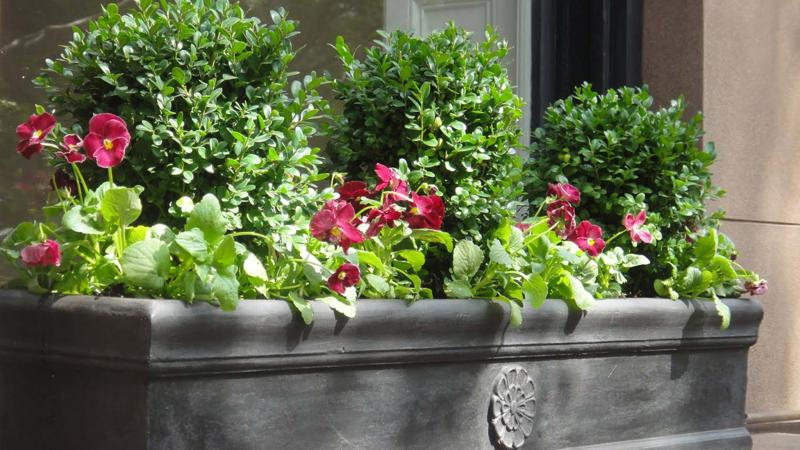
Monrovia
Longing to grow boxwood in your garden? Grow boxwood in containers all summer long, then bury potted shrubs in the garden to overwinter.
Every urban greenspace and outdoor living space deserves to have woody plants.
Lack the proper space to grow a shrub or tree? Growing shrubs, even trees, in containers has the power to transform your outdoor space and maximize its usage. With today’s emphasis on compact plants, it’s more possible than ever to find suitable species for a containerized environment.
Depending on your choice of vertical woody accent, it’s also possible in our cold climate to grow trees and shrubs in pots year-round.
To dig a little deeper into the challenges as well as the processes in determining solutions, I talked with Martha Barwinsky. As the city’s forester, one of Barwinsky’s goals is to develop enhanced planting sites for Winnipeg’s downtown area and regional streets despite the concrete nature of the urban jungle. In today’s urban design, says Barwinsky, the city no longer plants trees in typical 120 x 120-centimetre tree pits in sidewalks.
On some city medians where trees have died as a result of the impact of de-icing salts as the spray moves into the soil, says Barwinsky, raised beds have made it possible to establish trees again. She says that the city is also using underground tree vaults together with a new technology called silva cell, a suspended pavement system that also provides stormwater management. The first commercial installation of silva cells in Canada was in 2007 beneath the sidewalk on the north side of Broadway Street in Winnipeg. American Elms were planted on one entire block. Since then, silva cells have been installed in other projects on King Street (adjacent to Old Market Square), Fort Street, Portage Avenue by the St. James BIZ, and at the Manitoba Hydro building downtown.
"The main thing to consider with either raised beds or underground tree vaults," says Barwinsky, "is soil volume." Trees require a lot of soil volume in order to grow to their full capacity. If a smaller-stature tree is being planted, the required soil volume isn’t as great. "We want the trees to not just survive, but to thrive," says Barwinsky.
When installing a tree or shrub for a year-round container display, the thickness of the container matters, but so does the minimum soil volume requirement for the particular tree or shrub being planted. Barwinsky points out, too, that it is more the horizontal volume of soil than depth that is important because the majority of most new tree and shrub roots will grow horizontally from the side of the root ball.
"The majority of feeder roots, in particular, are typically in the top metre of a soil," she says. For many specialized planting sites, all that is required is a metre of soil with the volume measured more in the horizontal spread for the roots of woody plants.
Good drainage is essential. Insulation, too, says Barwinsky, helps to protect the root systems of plants in above-ground containers in our winter climate. The large raised planters on the bridge at Queen Elizabeth Way have rigid insulation on the inside of their walls.
The large trees planted inside did fairly well for several years but must now be replaced. Heavy vehicular traffic and de-icing salt spray combined with severe winters shortens the lifespan of containerized woody plants.
Barwinsky says that the city generally sticks to really tough, hardy trees that are native to our region. Whether urban trees are planted in raised containers or the more expensive option of silva cells, says Barwinsky, a green canopy has significant environmental and social benefits.
For homeowners, the benefits of trees and shrubs are equally significant. Fortunately, there are containerized options that are both varied and accessible. Need to enhance a shady area with some rich colour or give a border more height? Longing to over-winter a particularly fussy plant? Or perhaps you are simply looking for a container design that is totally different from anyone else’s. Container gardens make it all so easy. When planting in garden containers, it’s important to use a good quality soilless mix.
For his clients, Ram Tiodin, owner of Tiodin Softscaping & Design (tiodin.com), plants trees and shrubs in containers for both seasonal and year-round enjoyment. Tiger Eyes Staghorn Sumac (Rhus typhina) is a beautiful thriller in a container, says Tiodin. A Zone 3 to 4 plant with proven hardiness in our climate, Tiger Eyes’ new growth is a bright chartreuse green. The deeply cut leaflets drape downward. In fall, the foliage of this Gold Medal Plant award-winner changes to brilliant yellow, orange and scarlet for a long-lasting container display. At the end of the growing season, Tiger Eyes can be planted into the ground for the winter.
Trees or shrubs that are a zone or two hardier than our Zone 3b climate are the best choices for year-round container displays. Tiodin has had great success growing Zone 2 Dwarf Globe Blue Spruce in year-round containers. Often he underplants with annuals or perennials. Provide enough moisture and continue watering containers throughout the fall. Site your container in a protected location. Water well in the spring.
If a client wants a tall tree, he chooses a sapling. Goldrush Amur Cherry is a favourite for its distinctive golden exfoliating bark. Rosybloom crabapple varieties work well, too. It’s worth nothing that the life expectancy for woody plants in containers is significantly less than for plants grown in the ground.
A single shrub can be used to create a smashing container design that is also low-maintenance. Examples abound. Summer Wine ninebark (Physocarpus opulifolius) is a hardy Zone 3a shrub with cascading wine-coloured foliage in full sun or black-purple foliage in a shade location. The more compact Spilled Wine weigela shrub with its dark, black-purple foliage with a wavy margin is perfect alone or tucked into an annual container design. Plant both of these into the garden in fall.
Boxwood is an appealing but not necessarily hardy shrub for Prairie gardeners. No problem, says Tiodin. Grow boxwood in a container until fall then dig a hole in an area of your garden where you are assured of good snow cover. Pack soil all around the outside of the container to insulate the roots. In early spring lift out the shrubs and place back into their containers. I’ve tried this and it works well. Tiodin says it is important to add a fresh layer of soilless mix and feed with a slow release fertilizer. To rejuvenate a root-bound shrub, Tiodin recommends reducing the root system.
What if you would like to grow something exotic in a container such as a Zone 5 Japanese Maple tree (Acer palmatum)? Large to small specimens can be found at many garden centres. Sophisticated with unsurpassed purple foliage that turns a flaming red in fall, Japanese Maple trees represent an investment as well as beauty that deserves to make a repeat performance year after year. To overwinter, Tiodin recommends storing a potted Japanese Maple tree in an unheated garage. Place the container on wooden blocks. In spring, acclimatize gradually.
The Can-West Iris Society will host its annual iris show and sale tomorrow at the Bourkevale Community Centre, 100 Ferry Rd. 1 p.m. to 4 p.m. Admission is free.
colleenizacharias@gmail.com

